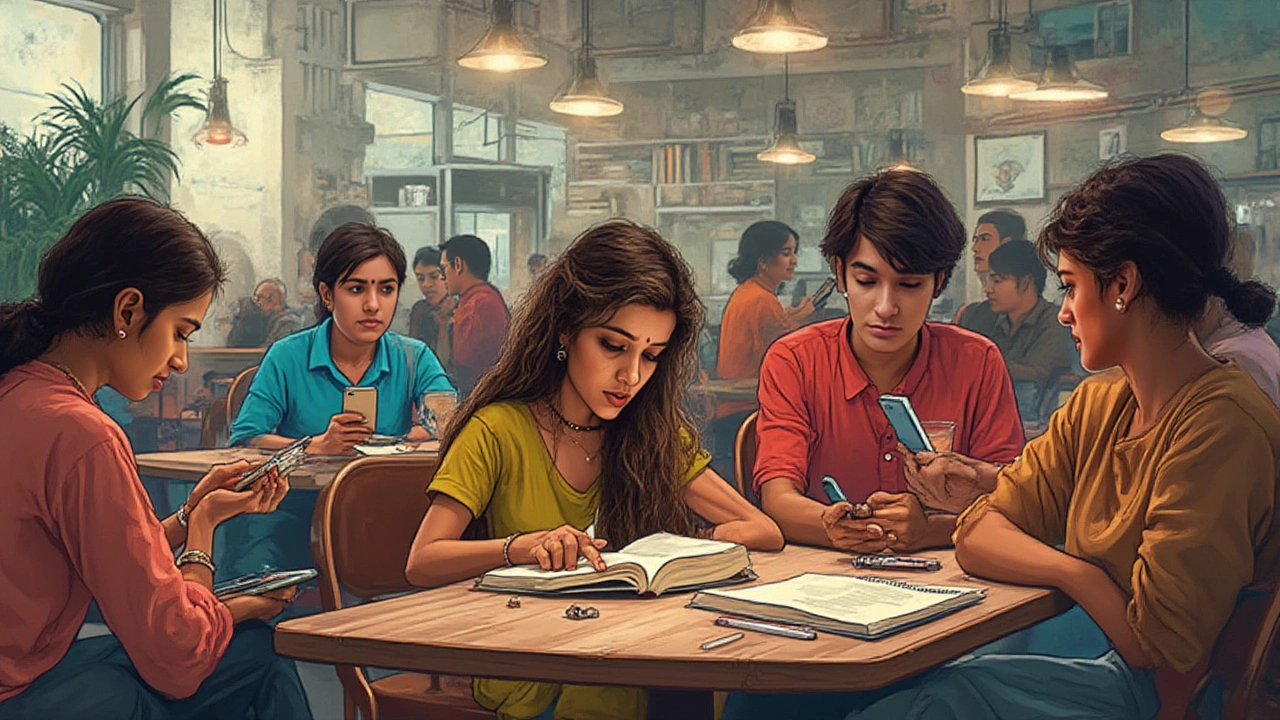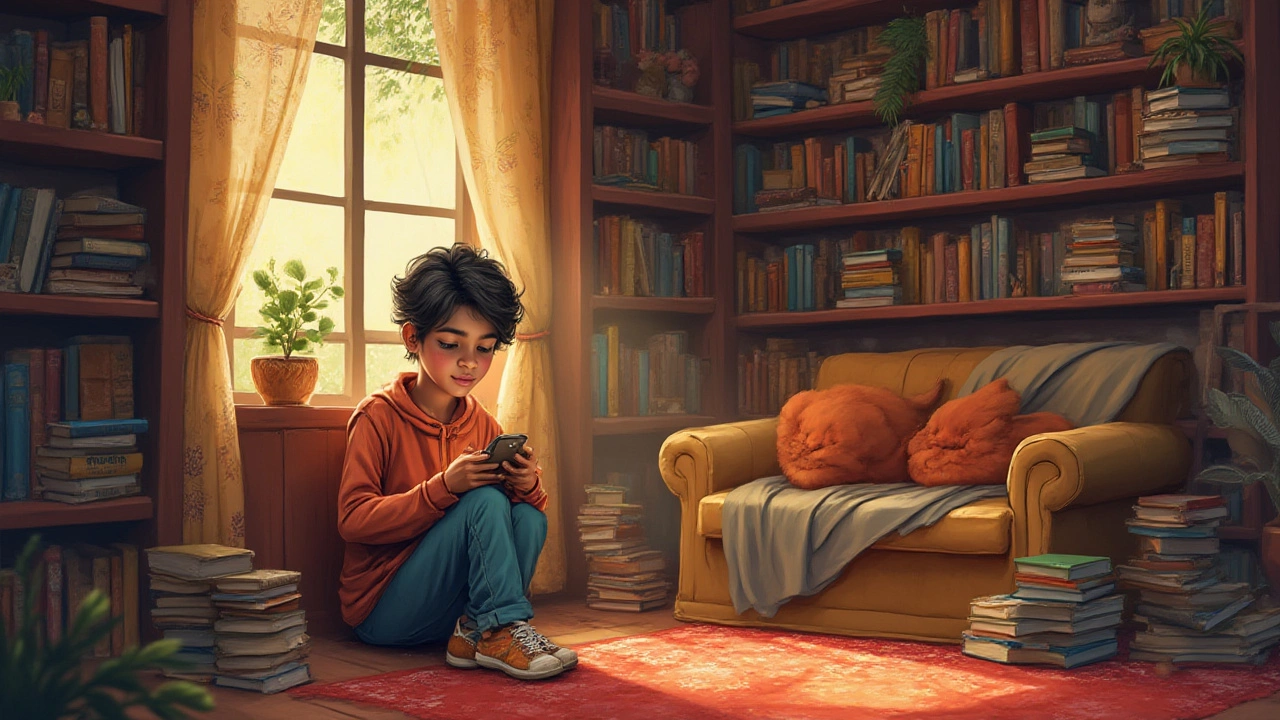A thousand rabbit holes compete for attention right now, but books, oddly, are getting left behind. I remember wolfing down library books as a kid—now I catch myself scrolling endlessly through reels, with that half-finished novel gathering dust on my nightstand. It's not just me. Bookstores that once seemed immortal have gone independent, minimalist, or mainstream. Numbers don’t lie: the time we spend reading for pleasure has dropped year after year. So, what’s eating away at reading’s charm? The answers aren’t what you might expect.
The Rise of the Digital Avalanche
Smartphones have snuck into every corner of life. A 2024 Pew Research study showed that the average adult spends over 3.5 hours a day on mobile devices—not counting work. For kids, total screen time sometimes doubles that. Streaming platforms like Netflix, YouTube, and TikTok eat up hours people once reserved for books. I’ve caught myself binge-watching old chef competitions late at night because it’s easy, quick, and the next click is always waiting. Even among hardcore readers, e-readers compete with notifications and app pings. There's just so much content—all instantly accessible, all pushing for a sliver of your attention.
Instant digital gratification has shifted how we think. Why read 300 pages when you can find a summary or listen to a podcast in 20 minutes? In 2020, audiobook sales spiked by 16% and have grown ever since, according to the Audio Publishers Association. Sure, audiobooks and podcasts are technically reading, but it’s passive. The imagination muscles you flex while reading are rarely needed when content is served straight into your ears.
And yet, physical bookstores are not closing up shop everywhere. The American Booksellers Association reported a slight rise in independent bookstores in 2024, but it's a gentle uptick, not a boom. Even these stores now run active social media channels, host wine tastings, or sell curated gifts along with their books just to survive.
Digital distractions also changed our attention spans. MIT researchers ran attention studies that showed the average focus time has shrunk to roughly 47 seconds on a task before switching, thanks to screens. Long-form reading’s slow payoff feels unfamiliar, sometimes even boring, for brains hooked on the dopamine drip of social media feeds. That’s a big hurdle for anyone reaching for a book after a long day.
Shifting Social Habits and New Priorities
Reading, plain and simple, isn’t the social glue it once was. When I was a kid, classrooms had reading corners and summer came with book lists—now, school reading is more likely to come in digital learning modules or as a bite-sized assignment. Families watch TV together; friends talk video games. When Delia and I meet friends, talk turns to movies, shows, news events—rarely a book club update unless someone’s joined one online. The culture has veered toward more visual, shared entertainment.
On top of that, the cost of new books is another barrier. Hardcover bestsellers often run over 30 dollars in the US, a price that puts off younger readers and low-income buyers. Libraries are still going strong, but even those have shifted budget and shelf space over to multimedia and community events. Data from the Institute of Museum and Library Services in 2023 showed libraries ramping up not just book lending but streaming, gaming, and coworking spaces. Books, while still the focus, are not the centerpiece everywhere.
The way we define “being smart” changed too. There’s a bigger prize for being fast and up-to-date than for being well-read. Schools push rapid-fire test prep, and the work world rewards quick answers. Deep reading requires patience—something less celebrated in a world that crowns speed, multitasking, and adaptability. When employers value snappy communication, reading a dense, slow-paced novel feels like a luxury.
Some people do make time for books by joining online communities (like BookTok on TikTok or subreddit reading challenges). These groups are helping fighting back against the trend, but even they rely on digital tools that compete with actual reading.

The Numbers: A Closer Look at Reading Trends
Let’s not guess—here’s what the data says about how much we’re actually reading. According to the annual American Time Use Survey, the average American adult read for pleasure just 16 minutes a day in 2023, compared to 23 minutes in 2004. That’s a gradual but steady drop. Among teens, the fall is steeper: a National Center for Education Statistics report found that in 2024, only 12% of 17-year-olds reported reading almost every day for fun, compared to 31% in 1984.
Here’s a quick breakdown of recent stats:
| Year | Avg Daily Pleasure Reading (Minutes) | % Teens Reading Daily | Audiobook Sales (in $Billion, US) |
|---|---|---|---|
| 2004 | 23 | 31 | 0.6 |
| 2014 | 19 | 22 | 1.5 |
| 2023 | 16 | 12 | 2.2 |
Notice that as print reading declined, audiobooks filled some of the gap. But the key point: fewer people are carving out time to physically read for fun. Publishing is also feeling the pinch—literary fiction sales plummeted by about 25% from 2011 to 2023 (NPD BookScan). Meanwhile, genres that lend themselves to quick engagement—like romance and self-help—held steadier, but have been affected, too.
There is a bright spot: graphic novels and manga are exploding in popularity, especially among younger readers. Schools and libraries have seen a surge in demand here—the 2024 Children’s Book Market Report noted manga sales up 15% over the previous year. Visual storytelling still pulls at readers, just not in the traditional chapter-book format.
What Does This All Mean—and What Can We Do?
So, reading as we knew it is fading, but it’s not doomed. People crave stories, knowledge, and escapism—it’s just that the delivery is shifting. If actual, deep reading matters (and after years of late-night Wikipedia scrolls I’m convinced it does), fighting back means making books accessible and inviting again.
Here are real-world tips that work in our noisy world:
- reading trends show most people still start reading for pleasure as kids—parents should read aloud even after children learn to read themselves. Turns out, older kids who hear nightly stories are twice as likely to read for fun at age 15.
- Switch up formats without guilt. Graphic novels, magazine features, or short story collections all “count”—the key is to enjoy the process, not just finish the book.
- Make reading visible: Keep a book in every bag, on the kitchen counter, in the car. Stack them in sight, not hidden away.
- Cut out a few minutes before bed as a no-screen zone. Even 5-10 minutes has been shown to improve sleep, according to the Sleep Foundation’s 2023 report.
- Join or start a real-life book club. It's less about finishing every book and more about carving out space for discussion with friends—like my group that meets over tacos and doesn’t judge if you skimmed.
It's not about blaming technology—it’s about pushing back, even a little, against the flood. If you’re feeling the drift away from reading, so is almost everyone else. But every page counts, and every story finished has a way of expanding (not shrinking) your world. It's not gone—it’s just harder to find the time. And honestly, the stories are still waiting.

